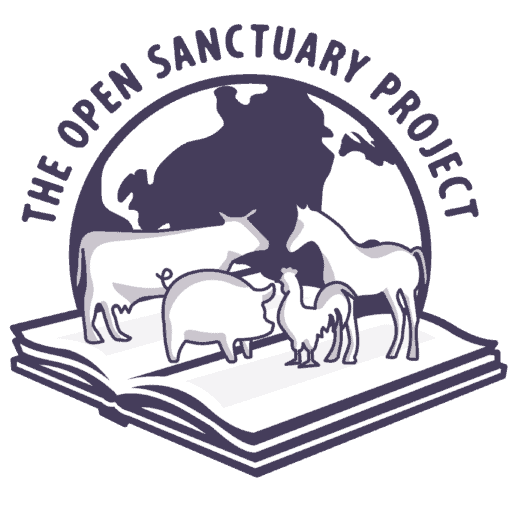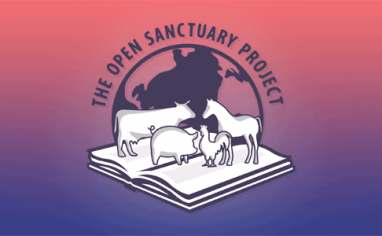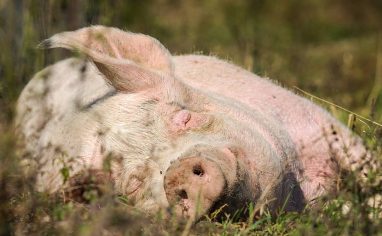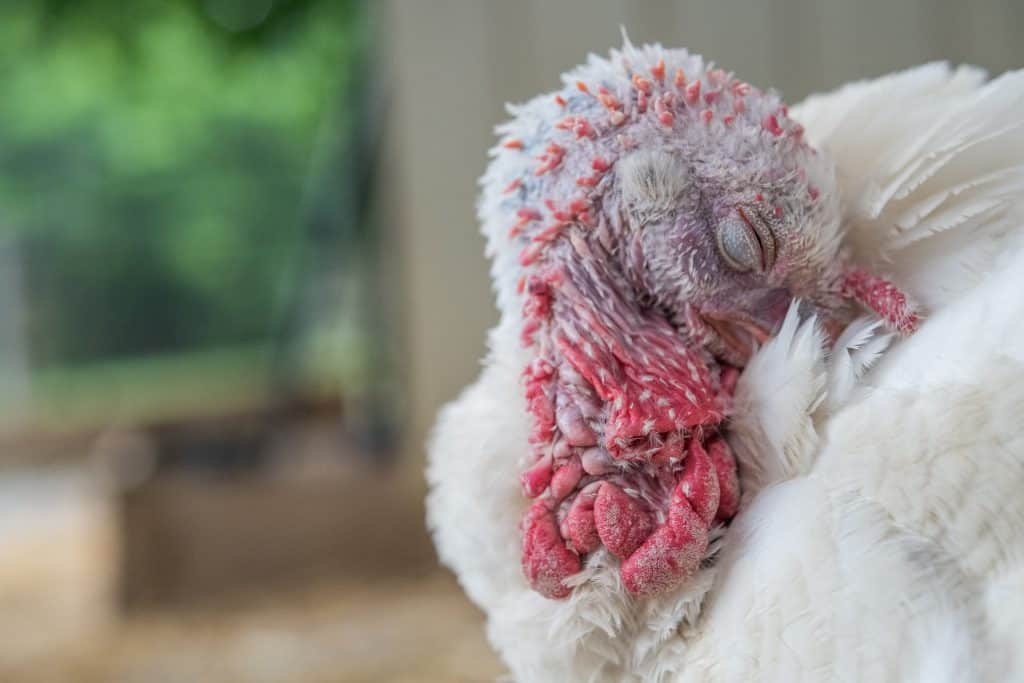
This resource was updated in preparation for veterinary review. It was originally published on March 20, 2018.
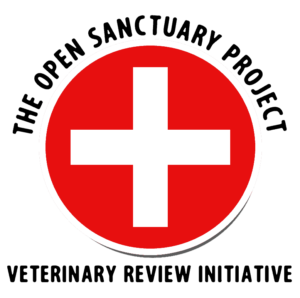
Veterinary Review Initiative
This resource has been reviewed for accuracy and clarity by a qualified Doctor of Veterinary Medicine with farmed animal sanctuaryAn animal sanctuary that primarily cares for rescued animals that were farmed by humans. experience as of August 2025.
Check out more information on our Veterinary Review Initiative here!
Consider The Risk Of Highly Pathogenic Avian Influenza (HPAI)
Given the widespread risk of HPAI in recent years, it’s important to consider the current risk in your area before welcoming new avian residents. While quarantineThe policy or space in which an individual is separately housed away from others as a preventative measure to protect other residents from potentially contagious health conditions, such as in the case of new residents or residents who may have been exposed to certain diseases. plays an important role in protecting your existing residents from being introduced to certain infectious diseases a new resident may expose them to, when it comes to HPAI, quarantining onsite is not enough to protect residents from the disease or regional control efforts. Depending on the current situation in your area (or where the new turkeyUnless explicitly mentioned, we are referring to domesticated turkey breeds, not wild turkeys, who may have unique needs not covered by this resource. is coming from), it may not be safe to bring them to your sanctuary. To learn more about HPAI, check out our in-depth resource here or our FAQ here.
When a new turkey arrives at your sanctuary, there are a number of critical steps that must be taken to ensure the safety and health of the incoming resident, the existing residents, and yourself! In this resource, we’ll discuss important incoming protocols for turkeysUnless explicitly mentioned, we are referring to domesticated turkey breeds, not wild turkeys, who may have unique needs not covered by this resource., but as you’ll see, the specifics of your incoming protocols may vary depending on your region, philosophy of care, and unique circumstances. The following information is meant to give folks a basic understanding of the types of incoming protocols that may be necessary when welcoming turkeys to their sanctuary, but we recommend that folks work with their veterinarian to identify the most appropriate incoming protocols for their residents.
Take Notes!
Remember to keep track of all intake information and records of any new resident. Find our Resident Record Keeping guide here.
Identify The Specific Needs Of Incoming Individuals
Before welcoming a new resident, it’s important to have at least a basic understanding of their species’ needs so that you can prepare to meet those needs. When it comes to turkeys, it’s not just about knowing what turkeys, as a species, require, but also about what an individual needs based on their breed type. Large breedDomesticated animal breeds that have been selectively bred by humans to grow as large as possible, as quickly as possible, to the detriment of their health. turkeys (also known as broad-breasted turkeys) have different care needs from non-large breedA domesticated animal breed that has not been specifically engineered to grow as quickly as possible for the purpose of human consumption. In resources at The Open Sanctuary Project, "Heritage" breeds of turkeys, for instance, are "non-large breed", even if they are physically quite big. turkeys (also known as heritage turkeys). If you have experience caring for one breed type, but not the other, it’s important to know that while there is some overlap in terms of the care they require, there are also areas where their needs diverge from one another. You can read a bit more about the differences between large breed and non-large breed turkeys here, and you can read more about caring for large breed turkeys here.
We provide general recommendations regarding the nutritional, housing, and care requirements of both large breed and non-large breed turkeys, but it’s important to consider if new arrivals have different needs or require any special accommodations based on factors such as their age, sex, health status, known history, or the circumstances of their recent living situation. In some cases, this will be something you can figure out before even meeting the new arrival based on the information you are provided with, but other times you’ll gather this information after their arrival, for example, during their intake evaluation, during a veterinary exam, or during your observation of the individual (as described below).
Each new resident and situation will be different, but we want to highlight a few of the more common situations sanctuaries may encounter and how to proceed:
Welcoming Chicks
Turkey chicks (poults) have very different needs from mature turkeys. It’s important to be aware of these differences before welcoming a turkey chick to your sanctuary so that you can provide them with the care they need to thrive. You can read more about caring for turkey chicks here. It’s not uncommon for sanctuaries to be contacted about chicks with leg issues (“spraddled leg” or “splayed leg”), which could be the result of a slipped tendon or a congenital issue, among other things. It is imperative that the individual be evaluated by an experienced avian veterinarian to determine the cause of the leg issue and the best course of action. While online sources may suggest the individual should be splinted or hobbled, without knowing exactly what’s going on (typically through diagnostic imaging), you may implement interventions that actually cause more harmThe infliction of mental, emotional, and/or physical pain, suffering, or loss. Harm can occur intentionally or unintentionally and directly or indirectly. Someone can intentionally cause direct harm (e.g., punitively cutting a sheep's skin while shearing them) or unintentionally cause direct harm (e.g., your hand slips while shearing a sheep, causing an accidental wound on their skin). Likewise, someone can intentionally cause indirect harm (e.g., selling socks made from a sanctuary resident's wool and encouraging folks who purchase them to buy more products made from the wool of farmed sheep) or unintentionally cause indirect harm (e.g., selling socks made from a sanctuary resident's wool, which inadvertently perpetuates the idea that it is ok to commodify sheep for their wool). than good. Additionally, improper splinting or hobbling can make the primary issue worse or result in secondary issues, so you must be shown how to do this properly.
Depending on the age of the chicks and where they are coming from, you may welcome chicks who have recently been debeaked or detoed. These are cruel and painful practices in which the end of the beak and tips of the toes are cut or seared off. These individuals may need pain medication or other interventions while these sensitive areas heal. Be sure to work with your veterinarian to have the individual evaluated to determine how to best support them and keep them comfortable.
Welcoming Elderly Individuals
While some older turkeys will continue to thrive with the same care you provide to other turkey residents, some individuals may require something different, such as changes to their diet or living spaces. You can read more about caring for elderly turkeys here.
Welcoming Individuals Who Are Obese
Depending on the individual’s previous living situation and breed, a new arrival may be significantly overweight. In cases such as this, it’s important to work with an experienced veterinarian or avian nutritionist to determine the most appropriate diet to encourage healthy weight loss and to watch them closely for signs of other health issues that often occur secondary to obesity. These include bumblefoot, arthritis, and, if they are spending a lot of time lying down, hock1: the tarsal joint or region in the hind limb of a digitigrade quadruped (such as the horse) corresponding to the human ankle but elevated and bending backward 2: a joint of a fowl's leg that corresponds to the hock of a quadruped sores and keel sores. If a new arrival is already dealing with issues secondary to their weight, be sure to have them evaluated by your veterinarian and work closely with them to manage or treat the issue. Providing these individuals with living spaces that have extra bedding or cushioned substrates can help prevent pressure sores and slow their progression if they have already developed.
Welcoming Individuals With Injuries
It’s not uncommon for sanctuaries to be contacted about turkeys who are severely injured – possibly from a predator attack, transport accident, or frostbite. These individuals should be evaluated by a veterinarian immediately. It’s important to note that bite wounds, even if they appear small, can be quite dangerous and almost always require antibiotic treatment.
Adhere To A Quarantine Policy
While the specifics of what each new arrival needs in terms of things like diet or housing may vary, one universal truth is that all new arrivals must be quarantined to prevent possible disease spread between the new resident and others. Quarantine is critical for all new residents of any species, even if they appear healthy and even if you know exactly where the individual came from! Quarantine procedures protect the rest of your residents (and the humans who care for them) from infectious diseases that may not be producing clinical signs in a healthy-looking arrival – an entire flock could easily be infected and possibly even killed by certain infectious diseases. You can read more about quarantine protocols here.
If you’re taking in a group of turkeys that were living together previously, you can probably quarantine them together since it’s likely that any infectious diseases one has, the others have already been exposed to, and staying together may put the new residents more at ease. However, if an individual seems very ill or is behaving oddly, they should be isolated from the others and evaluated by a veterinarian. Additionally, if the group includes a mix of mature large breed males and females, they will likely need to be separated to protect females from injury by being mounted by large males. Regardless of breed type, whenever you welcome a group of individuals, it’s important to monitor them to ensure that the current social dynamics are safe – just because they came in together and were living together previously, doesn’t necessarily mean they get along well. If anyone appears to be getting picked on, find a way to split the group to reduce tensions while avoiding anyone having to live alone unless absolutely necessary.
Enrichment Can Help!
Companionship for flock animals such as turkeys is very important to their health. While quarantine must be given priority for new residents, it’s important to also consider their mental well-being during this time. An enrichment plan can go a long way in reducing stress, boredom, and loneliness for a quarantined individual, and we’ve got multiple resources that can give you ideas about how to do this. We suggest starting with our resources on social enrichment and turkey-safe enrichment.
Be Careful With Those Eggs!
If you typically feed eggs back to any of your residents, we recommend waiting to do so with eggs from quarantined residents until you have gotten the all-clear from your veterinarian.
Evaluate The New Turkey’s Health
When welcoming a new resident to your sanctuary, you must assess their overall health to ensure you are addressing any issues as soon as possible. This is accomplished through initial observations, an intake evaluation, ongoing observation, and possibly a veterinarian’s assessment of the individual, especially if the new resident shows any signs of concern or is part of a pending cruelty case. Diagnostic testing also plays an important role in evaluating the new arrival’s health and will be discussed later on.
Veterinary Examinations For New Arrivals
If a new arrival is showing signs of concern, you should consult with your veterinarian to determine the best course of action, which may be to have them seen immediately or to schedule an upcoming exam and closely monitor them in the meantime. But what about individuals who are seemingly healthy or who have minor issues that you are properly trained to manage on your own? If possible, it’s beneficial to schedule a time for them to be examined by your veterinarian as well! In addition to potentially catching health concerns you were not aware of, your veterinarian will be able to gather information specific to the individual that may come in handy later on (for example, baseline blood work). Additionally, seeing the new resident and understanding their history will help your veterinarian make specific recommendations regarding their care, which might include a slight alteration to your typical intake procedures.
Initial Observations
Whenever you welcome a new resident to your sanctuary, it is crucial that you spend some time observing the individual upon arrival to determine any immediate needs they may have. If you or your staff picked up the individual and transported them back to the sanctuary, this observation process will actually begin before the new resident sets foot on sanctuary grounds. Through thoughtful observation, you may be able to identify signs of concern that warrant immediate veterinary care or further assessment on your part. This part of the intake process will also help determine if an intake evaluation (described below) should happen immediately or if you can wait for the new resident to settle in a little bit. In instances where you are taking in multiple new residents, your initial observations can help inform the order in which you perform intake evaluations, prioritizing individuals who appear to require more immediate assessment.
In addition to observing new arrivals for signs of concern, this is also a good time to consider your current plans in terms of their care, diet, housing, etc., and whether or not these plans need to be adjusted based on your initial observations.
Identification
Every resident at your sanctuary is a unique individual, and sanctuary personnel should be encouraged to learn each individual’s name and to recognize them without needing to rely on leg bands or other types of temporary identification. When taking in a group of turkeys, it’s important to think about how to best facilitate the process of your team learning who is who. Every individual will have their own unique characteristics, so it may be helpful to take lots of pictures and write out thorough descriptions for staff and volunteers to refer to while learning everyone’s names. However, if the new arrivals look very similar, additional identification may be needed to make it easier for folks to quickly distinguish them from one another and to ensure information about each individual is added to the correct record.
You might consider fitting residents with leg bands (ensuring they fit properly and are not too tight or too loose) or making your own leg bands using different colored cohesive bandage wrap. While caregivers or volunteers are learning names, they can at least refer to the leg band to communicate any observations or concerns (for example, if a caregiverSomeone who provides daily care, specifically for animal residents at an animal sanctuary, shelter, or rescue. notices that a turkey whose name they do not yet know is limping, they can look at the color and/or number on their band and then refer to a posted list or resident database to figure out the name of the turkey resident). When using leg bands, they should be checked regularly to ensure they are not becoming too tight. It’s best to avoid putting bands on growing individuals, but if you must, be sure to monitor them closely and replace them before they get too tight.
Different styles of metal and plastic leg bands can be found through online suppliers, and your local feed store will likely also carry at least one type. When using plastic leg bands, we find that it is best to use broad, flat bands or zip tie style bands rather than thin corkscrew bands, as these have sharp ends that can cause injury if the band slips over the foot or above the hock. Thin metal styles can bend and break, resulting in sharp edges, so if you opt for metal bands, a thicker metal band may be safer long-term.
Prioritize An Intake Evaluation
It’s important to perform an intake evaluation on all new residents. Ideally, we recommend that new arrivals either be seen by a veterinarian or have an intake evaluation performed within 24 hours of arrival, though some individuals may need even more immediate assessment. An intake evaluation includes conducting a full health check to evaluate their overall health and to learn more about the individual, as well as to gather important information for their permanent record. Be sure to follow quarantine procedures while conducting the intake evaluation. To learn more about the intake evaluation process, including how to prioritize assessing and addressing a new resident’s needs, check out our resource here! If, for whatever reason, you are unable to perform a full health evaluation shortly after their arrival, you will need to closely observe new residents for signs of concern and take steps to address those concerns appropriately.
An intake evaluation is conducted in much the same way as a routine health checkThe Open Sanctuary Project uses the term "health check" to describe health evaluations performed by caregivers who are not licensed veterinarians. While regular health checks are an important part of animal care, they are not meant to be a replacement for a physical exam performed by a licensed veterinarian. – you should systematically check the individual’s entire body, looking for any signs of concern and providing any necessary treatments. While there are a variety of issues you may find during a new turkey resident’s intake evaluation, there are some health challenges that are especially common in new turkeys. These include:
- Respiratory Illness – Respiratory illnesses, of which there are many, are quite common in turkeys, and depending on the circumstances of their intake, it can be very common for a new arrival to come to the sanctuary with a respiratory illness. Watch closely, both during the intake evaluation and during the quarantine period, for any signs of respiratory illness such as discharge from the nareseither of the pair of openings of the nose or nasal cavity, swelling of sinuses, swelling around the eye, discharge from the eyes, sneezing, open-mouth breathing, audible breathing (wet, raspy, squeaky, etc.), extending their neck and gasping for air, and labored breathing, which may include tail bobbing. Turkeys with respiratory illness may look dull and tired with puffed feathers, their head may be tucked, and they may have a poor appetite. Work closely with your veterinarian to determine the cause of the respiratory illness to ensure appropriate treatment.
- Mobility Issues – You should assess the turkey’s mobility by watching them walk and looking for any abnormalities in their gaitA specific way of moving and the rhythmic patterns of hooves and legs. Gaits are natural (walking, trotting, galloping) or acquired meaning humans have had a hand in changing their gaits for "sport". or shifting of weight when standing. When checking their legs, pay extra attention to their feet and joints (especially their hocks), feeling for any heat, swelling, or crepitus (popping or crunching). Bumblefoot, joint infections, and arthritis are quite common in turkeys, especially large breed individuals, so be sure to work with your veterinarian to evaluate any heat or swelling of feet or legs and any mobility issues to determine the best course of action.
- External Parasites – Checking for external parasites should be a part of all resident health evaluations, but it is especially important for incoming turkeys. Lice and mite infestations are very common in new turkey arrivals, and new residents could easily spread these parasites to other residents if they are not addressed before discontinuing quarantine.
- Internal Parasites – Just as external parasites are very common in newly rescued turkeys, internal parasites are also quite common. In addition to submitting a fecal sample (discussed more below), be on the lookout for any concerning signs of internal parasites, such as bloody feces.
- Frostbite – While frostbite will be very unlikely in certain climates, if you live in an area where temperatures dip below freezing, you may find that new residents arrive with frostbite or signs that they had frostbite in the past. Be on the lookout for discolored or swollen areas on their toes, feet, and snood. Depending on how recently they developed the frostbite, toes may be red and swollen, and affected areas of the snood may be paler than normal. Affected areas may then turn purple or even black and become hard and cold. Be sure to have the individual evaluated by a veterinarian to determine the best course of action. You can read more about frostbite here.
Ongoing Observation
Some health conditions may take time to manifest outward signs. Therefore, in addition to evaluating their health upon arrival and during their intake evaluation, it’s important to continue to closely monitor new residents for signs of disease. While all residents should be observed closely each day, extra attention should be paid to new residents during their quarantine period to ensure any potential issues are caught and addressed as soon as possible and before quarantine is discontinued.
Incoming Testing
If you have not already done so, work with your veterinarian to determine appropriate incoming testing protocols for new turkeys you welcome to your sanctuary. While individuals showing signs of concern may require additional diagnostics, there may be certain tests your veterinarian recommends for all incoming turkeys. At a minimum, all new residents should have a fecal sample submitted to check for internal parasites. If parasites are detected, your veterinarian will be able to recommend treatments based on the fecal results. To verify that treatment was effective against internal parasites, be sure to submit another fecal sample 10-14 days after treatment. Because of the growing issue of drug resistance (including resistance to antiparasitic drugs), it’s important to work closely with your veterinarian to determine when treatment is necessary.
Your veterinarian may recommend including other tests in your incoming procedures based on the specifics of your region. Be aware that certain disease confirmations may require an official report to your local government. When establishing incoming testing procedures, you may want to have a conversation with your veterinarian about what a positive result would mean for the individual and the sanctuary.
Incoming Vaccines
Based on our conversations with the sanctuary community, it seems regular prophylactic vaccination of turkey residents is rare. Instead, vaccination is more commonly used in response to a disease outbreak. We always recommend working with your veterinarian to determine which, if any, vaccinations are recommended for your residents. If your turkey residents have received vaccinations in the past, be sure to ask your veterinarian if new arrivals should be vaccinated as well and to create incoming vaccine protocols for new arrivals.
When discussing potential vaccines with your veterinarian, make sure you understand both the benefits and risks of any vaccines before using them at your sanctuary – some vaccinations will cause residents to test positive for certain diseases, which could have devastating consequences depending on the situation and disease in question.
Establishing and following appropriate intake protocols can make a world of difference when it comes to ensuring the health and safety of your residents. If you haven’t already, be sure to consult with your veterinarian regarding the incoming protocols your sanctuary should adopt.
Ready To Introduce The New Turkey To Others?
Once the new turkey has completed quarantine and gotten the all-clear from your veterinarian, you can begin introducing them to other turkeys. You can read more about conducting turkey introductions here!
SOURCES:
Turkey Care Guide | Farm Sanctuary
Care Recommendations For Turkey Chicks | The Open Sanctuary Project
Potential Turkey Health Challenges | The Open Sanctuary Project
Backyard Turkey Health | Penn State Extension (Non-Compassionate Source)
Non-Compassionate Source?
If a source includes the (Non-Compassionate Source) tag, it means that we do not endorse that particular source’s views about animals, even if some of their insights are valuable from a care perspective. See a more detailed explanation here.
